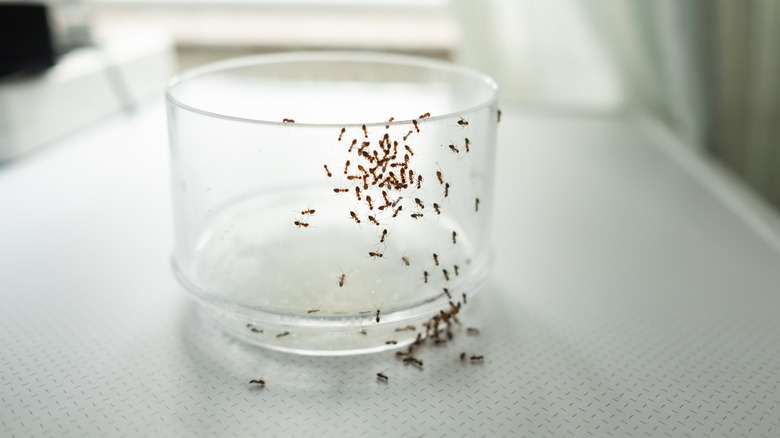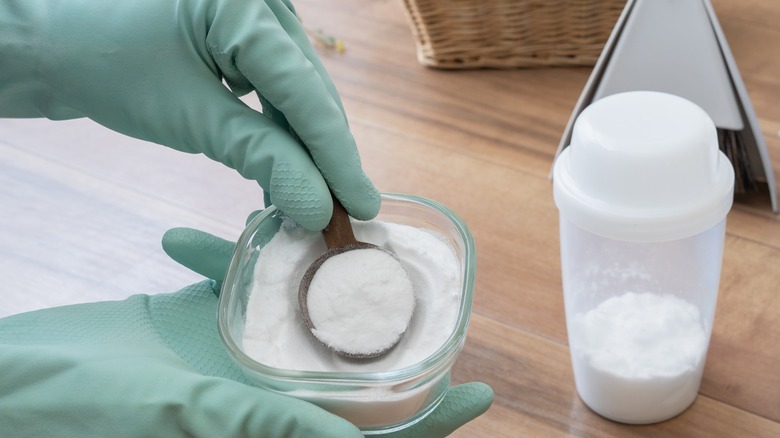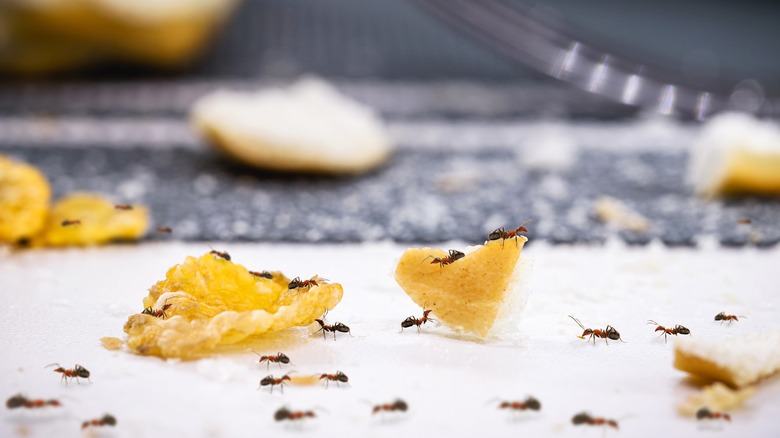Bring Your Ant Nightmare To An End With An Acidic Baking Ingredient You Already Have
Ants are pesky little creatures — when you see one, another is not far behind. These omnivores eat everything, so crumbs and spills are an open buffet attracting them inside your home. Water also brings the colony into your abode, from dripping faucets to pet bowls. Plus, these insects are small enough to squeeze through cracks in your siding or underneath the door. When the ant army strikes, use cream of tartar as your defense.
Cream of tartar, also known as potassium bitartrate, is tartaric acid in its powdered form. This acid coats the inside of wine barrels during the fermentation process. The substance is purified and bottled before joining the grocery's baking aisle. The pantry staple keeps sugar from crystallizing, laxes the proteins in egg whites, and deters ants. It is a food you can use to clean your house and also is a natural solution to halt an ant invasion.
Just sprinkle cream of tartar to stop ants
Stopping ants at the source will help you avoid toxic pesticides and killing these insects. Simply sprinkle cream of tartar where the ants are entering to create an impenetrable barrier. The crawlers won't want to pass the acidic powder and instead about-face out of your home. It is safe to use everywhere, from the driveway to the kitchen counter.
To amp up the power of cream of tartar or apply it to an area like a ceiling where powder wouldn't stick, you can turn it into a paste with another kitchen ingredient that'll make ants a thing of the past — white vinegar. Mix the two acids to form the pulp and spread it where necessary. You get the cream of tartar barrier while vinegar's fragrance disturbs the ant's scent trail that they leave for the rest of the colony. This natural deterrent works overtime to ensure your humble adobe is ant-free without having any insect deaths on your hands.
Precautions when using cream of tartar
Cream of tartar is a natural remedy, so you don't have to worry about it being harmful to you. However, potassium bitartrate can be toxic to some dogs and cats, causing kidney damage in severe cases, with diarrhea and vomiting a common side effect of tartaric acid poisoning. The larger your pet, the greater the amount of powder it takes to be fatal, but it is best to avoid dusting the baking agent where your companions are tempted to indulge.
Remember, cream of tartar acts as a repellant, not an insect killer, so the ants may find an alternative entrance into your home if you're housing their favorite treats. Keep an eye out if any of the critters return through a different opening, and sprinkle more of the powder. To stop attracting the ants, seal cracks with caulking, regularly dispose of crumbs, and don't leave out water or food. Then you'll have more cream of tartar for snickerdoodles.


